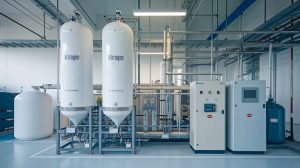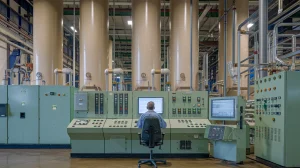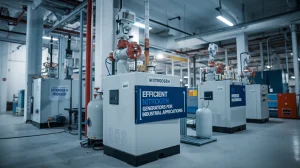Introduction to Nitrogen Generation
Nitrogen also known as N2 psa system is a versatile gas with a several range of industrial applications. From food packaging to pharmaceuticals and electronics, the demand for nitrogen continues to grow. One of the most reliable and popular methods for generating n2 on-site is through Pressure Swing Adsorption (PSA) technology. But what makes PSA such an attractive option, and how does it work? In this article, we’ll delve deep into the science, benefits, and applications of PSA nitrogen generation, helping you understand why it’s a go-to solution for industries worldwide.
What is Pressure Swing Adsorption (PSA)?
Pressure Swing Adsorption Nitrogen Generation (PSA) is a cutting-edge gas separation process that is commonly used for producing high-purity nitrogen and oxygen. The PSA method operates by using a material called adsorbent, which has a natural affinity for adsorbing certain gases under pressure. PSA technology can effectively extract nitrogen from the atmosphere by trapping unwanted gases such as oxygen and carbon dioxide, providing an efficient, cost-effective solution for on-site nitrogen generation.
For an alternative look at PSA systems for oxygen generator , you can explore this PSA System overview.
How Does PSA Work for Nitrogen Generation?
3.1 The Science Behind PSA
The principle behind PSA is simple: it uses pressure differentials to separate nitrogen from atmospheric air. Air is composed of 78% nitrogen, 21% oxygen, and small amounts of other gases. PSA systems work by forcing compressed air through a bed of adsorbent material, often carbon molecular sieves. These sieves selectively capture oxygen and other impurities, allowing nitrogen to pass through as the primary product.
3.2 Key Components of PSA Systems
A typical PSA nitrogen generator consists of:
Adsorption Towers: Filled with adsorbent materials such as carbon molecular sieves.
Compressed Air Feed: Supplies the atmospheric air to the system.
Valves and Switches: Regulate the adsorption and desorption cycles.
Nitrogen Storage Tank: Stores the nitrogen gas for use in various applications.
Why Choose PSA for Nitrogen Generation?
4.1 High Purity Nitrogen Output
One of the primary advantages of PSA nitrogen generation is the ability to produce nitrogen with purities ranging from 95% to 99.999%, depending on the industry requirement.
4.2 Cost-Effectiveness of PSA Systems
PSA systems are designed for on-site generation, reducing the need for bulk nitrogen delivery, which often carries significant transportation and storage costs. The initial investment in a PSA system is typically recouped within a few years due to reduced operational expenses.
Comparison of PSA with Other Nitrogen Generation Technologies
5.1 PSA vs. Membrane Technology
While both PSA & membrane technologies are equally used for n2 generation, The PSA systems offer higher nitrogen purity levels. also Membrane systems are generally less expensive upfront, but PSA provides better long-term savings for high-purity requirements.
5.2 PSA vs. Cryogenic Air Separation
Cryogenic air separation is another method for generating nitrogen, particularly for very high-purity needs. However, cryogenic systems are costly and energy-intensive, making PSA a more practical solution for most industrial uses.
Applications of PSA Nitrogen Generation
6.1 Nitrogen in Food Packaging
PSA N2 generators are commonly used in the food packaging industry to extend the product shelf life of perishable items by flushing oxygen out of the packaging.
6.2 Nitrogen in Electronics Manufacturing
In electronics manufacturing, nitrogen is essential for creating a controlled environment, preventing oxidation during the production of sensitive components.
6.3 Nitrogen in Chemical Processing
Chemical plants rely on nitrogen as a blanketing gas to prevent reactions with oxygen and moisture, ensuring the safety and efficiency of their processes.
Key Benefits of Using PSA Nitrogen Generators
7.1 On-Demand Nitrogen Supply
With a PSA system, businesses can generate nitrogen on-demand, ensuring a constant and reliable supply that can be scaled based on operational needs.
7.2 Energy Efficiency
PSA N2 generation is highly energy-efficient, requiring only the energy to compress air. The adsorption process itself does not require additional heat or electricity, making it more eco-friendly compared to other technologies.
7.3 Reduced Maintenance and Operational Costs
PSA systems are known for their low maintenance needs, offering businesses a simple, reliable way to generate nitrogen without frequent system overhauls.
How to Choose the Right PSA Nitrogen Generator
8.1 Purity Requirements
Different industries require different nitrogen purity levels. For example, food packaging may only need 95-98% purity, while electronics and pharmaceuticals often require 99.999% purity.
8.2 Flow Rate and Pressure Considerations
When choosing a PSA nitrogen generator, it’s essential to consider the required flow rate and pressure. This ensures the system meets the operational demands of your specific application.
Challenges of PSA Nitrogen Generation
9.1 Moisture and Impurities Management
One potential challenge with PSA nitrogen generation is managing moisture and other impurities in the air. These can affect the performance of the adsorbent materials, making regular air filtration necessary.
9.2 Initial Setup Costs
Although PSA systems offer long-term savings, the initial setup can be more expensive than other nitrogen generation methods, especially for smaller businesses.
PSA Nitrogen Generators for Small and Large-Scale Operations
10.1 Industrial PSA Generators
For large-scale operations, industrial PSA generators can produce nitrogen in large volumes, making them ideal for factories and plants.
10.2 Portable PSA Systems
Smaller, portable PSA nitrogen generators are also available for labs, small businesses, or remote locations that require a steady nitrogen supply.
Environmental Impact of PSA Nitrogen Generation
11.1 Lower Carbon Footprint
Since PSA systems consume less energy compared to cryogenic processes, they contribute to a lower carbon footprint, supporting greener operational practices.
11.2 Recyclability of Adsorbent Materials
Adsorbent materials used in PSA systems, such as carbon molecular sieves, can often be recycled, further reducing the environmental impact of nitrogen generation.
Innovations in PSA Nitrogen Generation Technology
12.1 Advances in Adsorbent Materials
Ongoing research in adsorbent materials is improving the efficiency and lifespan of PSA systems, leading to better nitrogen purity and reduced operational costs.
12.2 Integration with Smart Systems
Some PSA nitrogen generators are now integrated with smart control systems, allowing for remote monitoring and real-time adjustments to improve system performance.
How to Maintain Your PSA Nitrogen Generator
13.1 Routine Maintenance Checks
To ensure the longevity of your PSA nitrogen generator, it’s important to perform routine maintenance, including checking the adsorbent materials, valves, and filtration systems.
13.2 Best Practices for Longevity
Follow the manufacturer’s guidelines for operating conditions, including proper temperature and humidity control, to maximize the lifespan of your system.
Future Trends in PSA Nitrogen Generation
As industries continue to seek greener, more efficient solutions, PSA technology is poised to evolve with innovations in adsorbent materials, energy-saving mechanisms, and digital integration. We can expect to see even more advanced, efficient systems in the coming years.
Conclusion
Pressure Swing Adsorption (PSA) nitrogen generation is a proven, cost-effective solution for industries that require.



